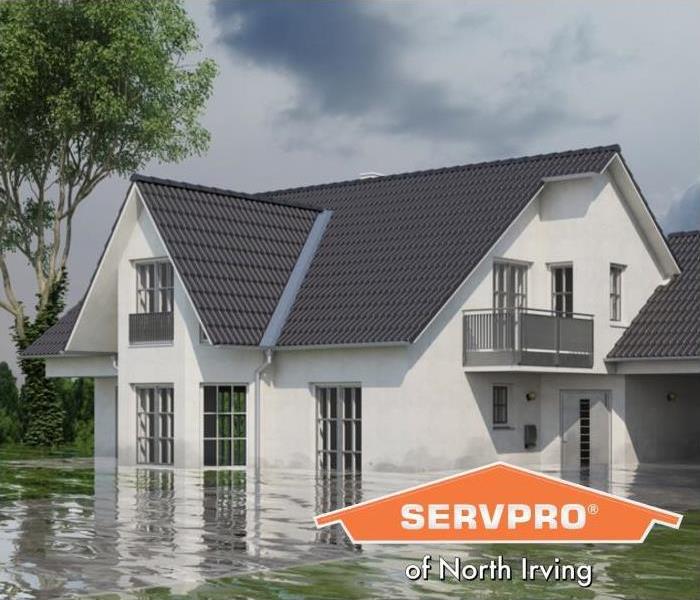Top 5 Things to Do in Dallas When Flash Flooding Occurs
9/29/2021 (Permalink)
 If flooding has damaged your home or commercial building, it’s vital to get professional help to restore water damage.
If flooding has damaged your home or commercial building, it’s vital to get professional help to restore water damage.
Flash flooding is all too common. The National Resources Defence Council (NRDC) says that floods are the most common natural disaster in the United States. Unfortunately, reports indicate that Texas has had the most deaths related to flash floods in the past 36 years. So, knowing what to do when a flash flood happens in Dallas could save your life. This article provides some handy tips on how to act if a flash flood happens in your area.
Has a flash flood damaged your property recently? If so, SERVPRO water damage restoration services help residents in Dallas get back to normal after flood damage. Call us 24/7 at (972) 986-7677 for a free estimate.
What is a flash flood?
A flash flood describes a weather event where heavy rain over a short period causes river levels to rise quickly. Factors that contribute to flash flooding include soil type, topography, and vegetation growth and density. In many cases, urban areas are at greater risk of flooding because water can’t penetrate the ground.
The danger of flash flooding is that it catches people off guard. Sudden, fast-moving water can trap people in vehicles, their homes, or at work. Of course, it’s almost impossible to protect properties against a raging torrent of floodwater and mud.
How to protect your family when flash flooding occurs
Many areas of Dallas are prone to flooding. Here is some helpful advice on what to do if heavy rainfall or tropical storms result in severe urban flooding.
1. Know the flood warnings
If there is a flood risk, the National Weather Service issues two types of warnings:
- Flash flood watch — The means that intense rainfall has created conditions favorable for sudden flooding.
- Flash flood warning — A flash flood is imminent or occurring. Sudden flooding can happen so fast that there’s no time to issue a flood warning alert.
2. Have a family disaster plan and preparedness kit
Before any disaster occurs, have a flood-specific plan about what to do in an emergency. Consult with FEMA flood zone maps to see the risk of a flood event in your area. Your evacuation plan should include a route to reach higher ground if a flood disaster occurs.
Additionally, each home should have an emergency kit that includes the following:
- A flashlight
- Hand-crank radio to listen to NOAA weather radio
- First aid kit
- Copies of essential documents
- Hygiene and sanitary items
- Medications
- Non-perishable food
- Water (one gallon of water per person, per day)
- Extra cash
- Cell phone and charger
3. Secure your property
If there is a flash flood watch, ensure that all propane or fuel tanks are secured. If possible, prepare sandbags to place at entrances to reduce flood water levels in your home.
4. Stay safe
When floodwaters rise, it’s easy to panic. If a flash flood is likely to occur, immediately head to higher ground. If you are caught unawares in your home, then find safety in the highest part of your house.
Additionally, it’s crucial to avoid any flooded areas or try to drive through flooded waters. It only takes 12 inches of swift water to carry away small vehicles.
5. Returning home
Remember that flood dangers don’t end when torrential rains have stopped and flood levels subside. Returning home, check for loose power lines, structural damage, or gas leaks. Remember that sewage or waste could contaminate floodwater. So, always wear protective clothing during cleanup.
Flash flooding in Dallas: The bottom line
If flooding has damaged your home or commercial building, it’s vital to get professional help to restore water damage. We can help you get your home back to inhabitable conditions as quickly as possible.
Contact us day or night at (972) 986-7677 for a free estimate and quick post-flood damage restoration.






 24/7 Emergency Service
24/7 Emergency Service